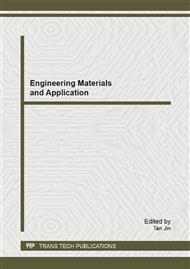p.284
p.289
p.295
p.302
p.306
p.312
p.317
p.321
p.327
Effect of Solution Aging Time on Stability of Colorimetric Assay for Degradation Rate Evaluation of Porous Si in Artificial Cerebrospinal Fluid
Abstract:
In order to evaluate the degradation rate of porous Si in artificial cerebrospinal fluid and obtain more accurate results, the effect of solution aging time on the stability of the ammonium molybdate colorimetric assay was investigated. Following the protocol of the colorimetric assay, the blue colored solutions with various silicic acid concentrations were prepared and then aged for different time periods up to 7 h. On the basis of linear regression analyses, the absorbance value of the blue colored solution was directly proportional to the silicic acid concentration. Moreover, the optimal aging time span of the solution maintained until 7 h, depending on the stability of the solution.
Info:
Periodical:
Pages:
306-311
Citation:
Online since:
January 2013
Price:
Сopyright:
© 2013 Trans Tech Publications Ltd. All Rights Reserved
Share:
Citation:


